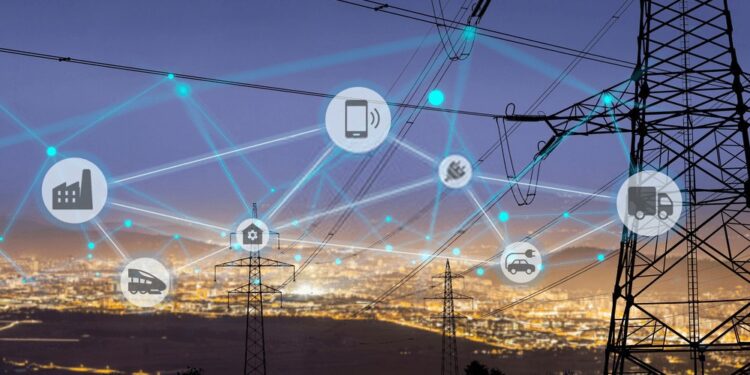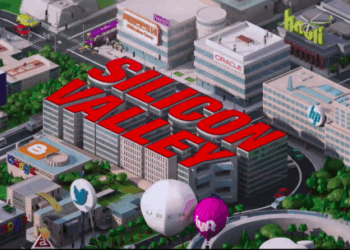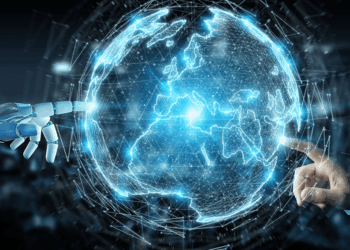The global energy landscape is undergoing a profound and necessary transformation. As the world grapples with increasing demand, the imperative for sustainability, and the integration of renewable sources, the traditional, centralized power grid is evolving into a more intelligent, resilient, and responsive system: the Smart Grid. This isn’t merely an upgrade; it’s a revolutionary shift powered by advanced communication technologies, data analytics, and Artificial Intelligence (AI), designed to optimize energy production, distribution, and consumption. The Smart Grid promises a future of greater efficiency, enhanced reliability, and a significantly reduced environmental footprint. This comprehensive article delves into the intricate world of Smart Grid power, dissecting its core technological components, the profound benefits it delivers, the significant challenges it faces, and the exciting future it promises for global energy management.
Unpacking the Intelligence of the Smart Grid
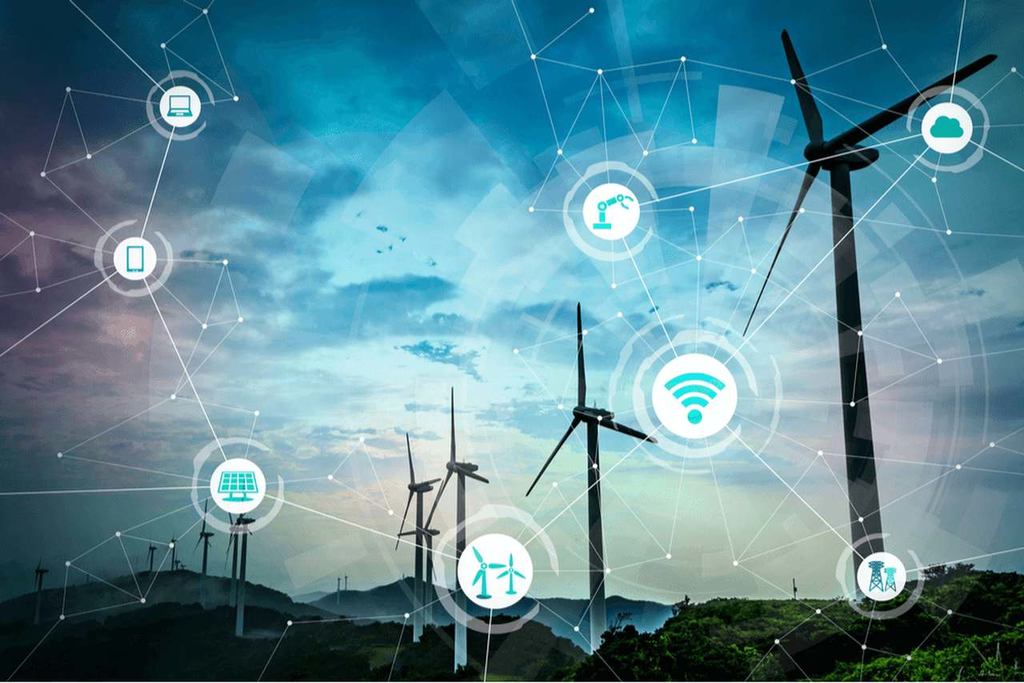
The Smart Grid is a modernized electricity network that uses information and communication technologies (ICTs) to gather information, such as information about the behavior of suppliers and consumers, in an automated fashion to improve the efficiency, reliability, economics, and sustainability of the production and distribution of electricity. Unlike the one-way flow of electricity in traditional grids, the Smart Grid enables a two-way flow of electricity and data.
A. Advanced Sensing and Measurement Infrastructure (AMI/Smart Meters): These are the foundational “eyes and ears” of the Smart Grid, providing real-time data on energy consumption and grid conditions.
- Smart Meters: Digital meters that record electricity consumption in intervals (e.g., hourly or more frequently) and communicate that data back to the utility automatically. They enable two-way communication, allowing utilities to send pricing signals or remotely connect/disconnect service.
- Sensors: Deployed throughout the transmission and distribution networks, these sensors monitor voltage levels, current flow, equipment status, and environmental conditions (e.g., temperature, wind speed) to provide a granular view of grid health.
- Phasor Measurement Units (PMUs): High-speed sensors that measure electrical waves on the grid with extreme precision, detecting subtle fluctuations that could indicate instability.
B. Integrated Communication Networks: A robust, secure, and high-speed communication backbone is essential for the seamless flow of data across the vast Smart Grid.
- Fiber Optics: Provides high bandwidth and low latency for critical data transmission over long distances.
- Wireless Technologies: Including cellular (4G/5G), Wi-Fi, and various mesh networks for communication with smart meters and distributed energy resources.
- Power Line Communications (PLC): Uses existing electrical wiring to transmit data, particularly effective for last-mile communication with meters.
C. Data Analytics and Artificial Intelligence (AI): The “brain” of the Smart Grid, processing immense volumes of data to derive actionable insights and enable intelligent decision-making.
- Machine Learning (ML): Algorithms learn from historical and real-time grid data to predict demand fluctuations, identify potential equipment failures, optimize energy routing, and detect anomalies that might indicate cyberattacks.
- Predictive Maintenance: AI analyzes data from sensors on transformers, power lines, and other equipment to predict when components might fail, allowing for proactive maintenance before outages occur.
- Demand Forecasting: AI models analyze weather patterns, historical consumption data, and economic factors to accurately predict future electricity demand, helping utilities optimize generation.
- Grid Optimization: AI algorithms can dynamically reconfigure the grid to balance supply and demand, minimize losses, and manage fluctuating renewable energy sources.
D. Advanced Grid Management Systems (SCADA/DMS/EMS): Sophisticated software platforms that provide real-time control and visualization of the entire grid.
- Supervisory Control and Data Acquisition (SCADA) Systems: Monitor and control industrial processes, including power generation and transmission.
- Distribution Management Systems (DMS): Manage the distribution network, optimizing power flow, isolating faults, and restoring service.
- Energy Management Systems (EMS): Manage the transmission network, ensuring stability and efficiency across large geographical areas.
E. Cybersecurity Infrastructure: Given its critical nature, robust cybersecurity is paramount to protect the Smart Grid from cyberattacks.
- Encryption and Authentication: Securing data transmission and ensuring only authorized entities can access and control grid components.
- Intrusion Detection Systems: AI-powered systems monitor network traffic for suspicious activity, identifying and alerting to potential cyber threats.
- Resilience Planning: Designing the grid to withstand and quickly recover from cyberattacks or physical disruptions.
F. Distributed Energy Resources (DERs) Integration: The Smart Grid is designed to seamlessly integrate various decentralized energy sources.
- Solar PV and Wind Turbines: Smart inverters and grid management systems dynamically manage the intermittent nature of these renewables.
- Battery Energy Storage Systems (BESS): Store excess renewable energy for later use, balancing supply and demand.
- Electric Vehicles (EVs): Can act as mobile storage units, potentially feeding power back to the grid (Vehicle-to-Grid, V2G) during peak demand.
- Microgrids: Smaller, self-contained energy systems that can operate independently of the main grid during outages, providing localized resilience.
Core Pillars of Smart Grid Implementation
The intelligence of the Smart Grid materializes across several crucial domains, transforming how energy is generated, delivered, and consumed.
Intelligent Generation and Transmission
Optimizing the production and long-distance transport of electricity.
- Integration of Renewables: Smart Grid technologies manage the inherent variability of solar and wind power, smoothing out fluctuations and ensuring grid stability by balancing them with other sources or energy storage.
- Predictive Maintenance for Generators: Sensors and AI monitor the health of power plant components (turbines, generators) to predict failures, allowing for proactive maintenance and reducing unscheduled downtime.
- Smart Transmission Lines: Sensors on transmission lines monitor for stress, temperature, and sag, preventing failures and optimizing power flow.
- Grid Resilience: Automated fault detection and self-healing capabilities on the transmission network reroute power around issues to minimize outages.
Smart Distribution and Automation
Enhancing the efficiency and reliability of electricity delivery to end-users.
- Automated Fault Detection and Isolation: Sensors quickly pinpoint the location of an outage, and automated switches can reroute power to restore service to unaffected areas instantly.
- Self-Healing Grids: Systems can autonomously detect and correct disturbances, minimizing the duration and impact of power outages.
- Voltage Optimization: Smart Grid systems dynamically adjust voltage levels to reduce energy loss during distribution, ensuring optimal voltage at the customer’s premise.
- Demand-Side Management (DSM): Utilities can send signals to smart appliances or industrial equipment to reduce consumption during peak demand, easing grid strain and preventing blackouts.
Demand Response and Consumer Engagement
Empowering consumers to be active participants in energy management.
- Time-of-Use Pricing: Smart meters enable variable pricing, where electricity costs more during peak demand hours and less during off-peak, incentivizing consumers to shift consumption.
- Smart Home Integration: Smart appliances (thermostats, water heaters, EV chargers) can respond automatically to grid signals, adjusting their consumption to save money for the consumer and reduce strain on the grid.
- In-Home Displays: Provide real-time energy consumption data to consumers, helping them understand and manage their usage.
- Customer Portals: Online platforms allowing consumers to view their energy data, set preferences, and enroll in demand response programs.
Energy Storage and Microgrids
Enhancing grid stability, resilience, and renewable energy integration.
- Grid-Scale Battery Storage: Large batteries store excess energy from renewables or off-peak generation and discharge it during peak demand or when renewables are intermittent, providing crucial flexibility.
- Residential and Commercial Storage: Batteries installed at homes or businesses can store solar power for self-consumption or act as backup during outages.
- Microgrids: Self-contained energy systems that can disconnect from the main grid (“island mode”) and operate independently, providing reliable power to critical facilities (hospitals, military bases) during widespread outages. They also enhance local resilience and can integrate local renewables.
Cybersecurity and Reliability
Protecting the vital infrastructure of the Smart Grid from threats.
- Threat Detection and Prevention: AI-driven systems monitor grid networks for unusual patterns that could indicate cyberattacks, isolating threats before they can cause widespread disruption.
- Secure Communications: All data transmitted across the Smart Grid is encrypted and authenticated to prevent unauthorized access or tampering.
- Redundancy and Resilience: Designing the grid with built-in redundancies and diverse communication pathways to ensure operation even if parts of the system are compromised.
- Incident Response: Protocols and systems for rapid detection, containment, and recovery from cyber and physical security incidents.
The Transformative Benefits of Smart Grid Power
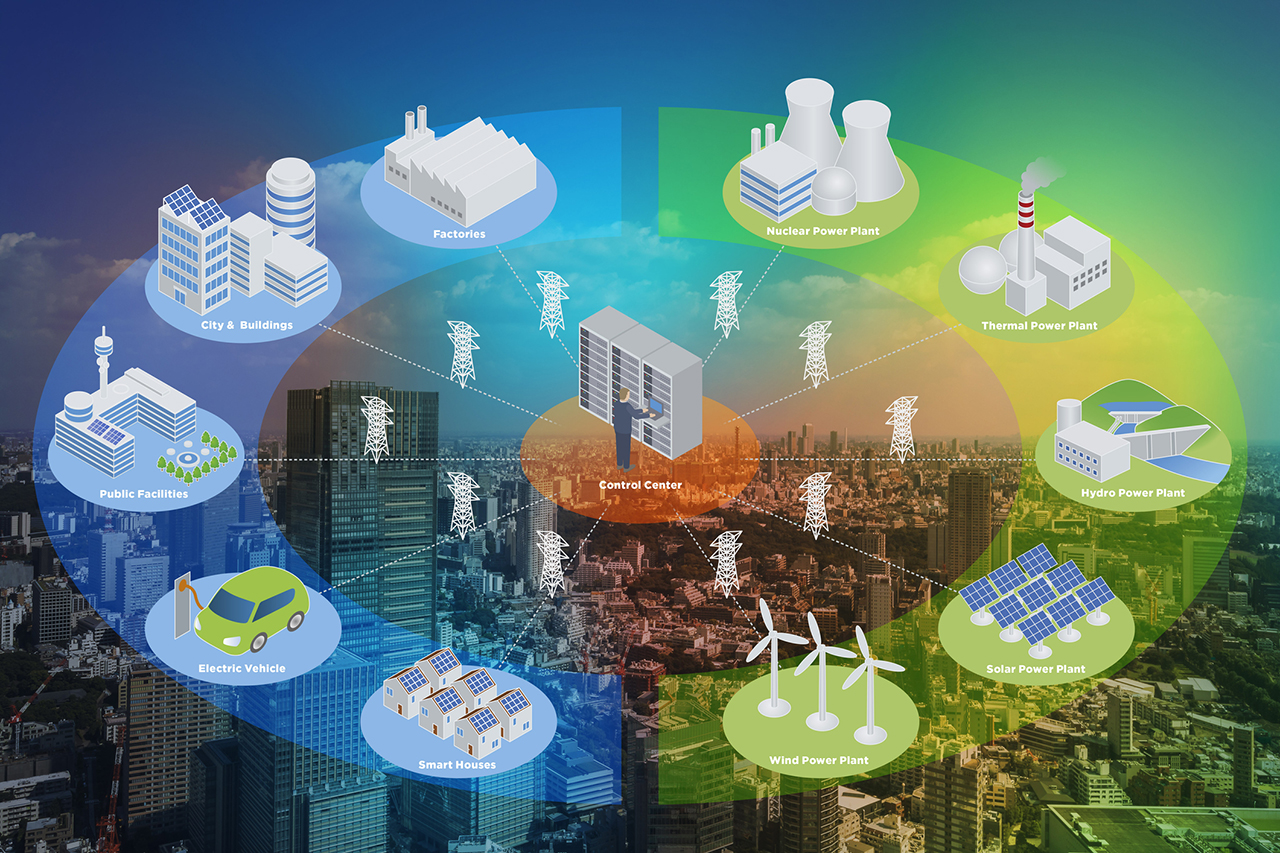
The transition to a Smart Grid promises a profound re-imagining of our energy infrastructure, delivering a host of advantages for consumers, utilities, and the environment.
A. Enhanced Reliability and Resiliency:
- Fewer and Shorter Outages: Automated fault detection and self-healing capabilities quickly isolate problems and reroute power, drastically reducing the duration and frequency of power outages.
- Improved Grid Stability: Real-time monitoring and dynamic management help the grid adapt to fluctuations from renewable energy sources and prevent widespread blackouts.
- Protection from Attacks: Advanced cybersecurity measures make the grid more robust against cyberattacks and physical tampering.
B. Increased Efficiency and Reduced Energy Waste:
- Optimized Power Flow: Smart Grid systems dynamically manage electricity flow to minimize losses during transmission and distribution.
- Reduced Peak Demand: Demand response programs incentivize consumers to shift energy use away from peak hours, reducing strain on the grid and avoiding the need for expensive, less efficient “peaker plants.”
- Predictive Maintenance: Prevents costly equipment failures, leading to more efficient asset utilization and reduced repair expenses.
C. Seamless Integration of Renewable Energy:
- Facilitates Green Energy Adoption: The Smart Grid is designed to easily integrate intermittent renewable sources like solar and wind, which traditional grids struggle to manage.
- Optimized Renewable Output: Enables dynamic management of distributed renewable generation (e.g., rooftop solar), maximizing their contribution to the grid.
- Reduced Carbon Emissions: By supporting higher penetration of renewables and improving overall efficiency, the Smart Grid significantly lowers the carbon footprint of electricity generation.
D. Empowered Consumers and Energy Savings:
- Informed Choices: Real-time energy consumption data and time-of-use pricing empower consumers to make smart decisions about their energy usage, leading to lower bills.
- Control and Convenience: Smart home integration allows consumers to automate energy use, enhancing comfort and convenience while saving money.
- Participation in Energy Markets: Consumers with distributed energy resources (e.g., rooftop solar with battery storage) can potentially sell excess energy back to the grid.
E. Economic Growth and Innovation:
- Job Creation: The development, deployment, and maintenance of Smart Grid technologies create new jobs in engineering, IT, manufacturing, and cybersecurity.
- New Business Models: Enables the growth of energy service companies, demand response providers, and microgrid operators.
- Competitive Energy Markets: Increased transparency and efficiency can foster more competitive energy markets, benefiting consumers.
F. Enhanced Grid Security:
- Deterrence of Cyberattacks: Advanced detection and response systems make the grid a less attractive target for malicious actors.
- Rapid Incident Response: In the event of an attack, the Smart Grid’s intelligence allows for faster containment and recovery.
- Resilience to Physical Threats: Distributed architecture and microgrids enhance the grid’s ability to withstand localized physical damage.
Navigating the Challenges of Smart Grid Implementation
Despite its compelling advantages, the transition to a fully functional Smart Grid faces several formidable hurdles that require concerted effort, significant investment, and innovative solutions.
A. Cybersecurity Risks and Vulnerabilities:
- Expanded Attack Surface: A highly interconnected Smart Grid presents a vastly larger attack surface for cyber threats compared to traditional grids. Every smart meter, sensor, and communication point is a potential vulnerability.
- Critical Infrastructure Target: The energy grid is a prime target for nation-state actors and sophisticated cybercriminals, making robust, layered cybersecurity defenses absolutely essential.
- Lack of Uniform Security Standards: The diverse array of hardware and software from multiple vendors can make it challenging to implement consistent and comprehensive security protocols.
B. High Initial Investment and Funding:
- Massive Infrastructure Upgrade: Modernizing an entire national or regional power grid is an incredibly expensive undertaking, requiring trillions of dollars globally.
- Return on Investment (ROI) Uncertainty: While long-term benefits are clear, the immediate financial ROI for some Smart Grid components can be difficult to quantify, making it challenging to secure initial funding.
- Regulatory Frameworks: Outdated regulatory frameworks may not provide adequate incentives or mechanisms for utilities to invest in Smart Grid technologies.
C. Data Management and Privacy Concerns:
- Volume of Data: Smart meters and sensors generate enormous volumes of granular energy consumption data. Managing, storing, and analyzing this “big data” is a significant technical challenge.
- Customer Privacy: The detailed consumption data collected by smart meters can reveal sensitive information about customer behavior (e.g., when they are home, when they use certain appliances). Ensuring the privacy and anonymity of this data is a major concern.
- Data Ownership: Who owns the data generated by smart meters? This is a legal and ethical question that needs clear resolution.
D. Interoperability and Standardization:
- Proprietary Technologies: Many vendors develop proprietary Smart Grid technologies that do not communicate seamlessly with each other, leading to fragmented systems and vendor lock-in.
- Lack of Universal Standards: The absence of universally adopted communication protocols and data formats hinders true plug-and-play functionality across different components and manufacturers.
- Legacy Systems Integration: Integrating new Smart Grid technologies with existing, often decades-old, legacy grid infrastructure is a complex and costly challenge.
E. Regulatory and Policy Barriers:
- Slow-Moving Regulations: Energy regulations often lag behind technological advancements, slowing down the adoption of new Smart Grid innovations.
- Rate Case Approvals: Utilities often face a lengthy and complex process to get approval for rate increases to fund Smart Grid investments.
- Incentive Structures: Existing regulatory structures may not adequately incentivize utilities to prioritize resilience, sustainability, or customer empowerment over traditional metrics.
F. Workforce Training and Skills Gap:
- New Competencies: Operating, maintaining, and developing Smart Grid technologies requires a new set of digital, analytical, and cybersecurity skills that many traditional utility workers may not possess.
- Aging Workforce: A significant portion of the utility workforce is nearing retirement, creating a knowledge transfer challenge and exacerbating the skills gap.
- Retraining and Reskilling: Utilities need to invest heavily in training and reskilling programs for their existing workforce and attract new talent with diverse technical backgrounds.
The Future Trajectory of Smart Grid Power
The evolution of the Smart Grid is dynamic and continuous, pointing towards an even more intelligent, decentralized, and sustainable energy future.
A. Ubiquitous Distributed Energy Resources (DERs): The grid will increasingly become a network of interconnected microgrids and DERs (rooftop solar, home batteries, EVs), with two-way power flow becoming the norm, reducing reliance on centralized power plants.
B. Advanced Predictive Maintenance with Digital Twins: Utilities will use “digital twins” – virtual replicas of their entire grid – combined with AI to simulate scenarios, predict equipment failures with extreme accuracy, and optimize maintenance schedules proactively.
C. AI-Driven Grid Autonomy and Self-Healing: The Smart Grid will evolve towards greater autonomy, with AI systems independently detecting and responding to grid disturbances, rerouting power, and restoring service with minimal human intervention, ensuring near-perfect reliability.
D. Transactive Energy Markets: Blockchain technology could enable decentralized energy trading, allowing consumers with DERs to automatically buy and sell excess energy with their neighbors or the grid, fostering local energy communities.
E. Enhanced Cybersecurity with AI and Quantum Computing: AI will play an even more critical role in real-time threat detection and automated response for cyber-physical security. Research into quantum-resistant cryptography will be crucial to protect the grid from future quantum attacks.
F. Integration with Smart Cities: The Smart Grid will become deeply intertwined with broader smart city infrastructure, optimizing energy use across buildings, transportation, and public services, creating truly integrated and sustainable urban ecosystems.
Conclusion
The Smart Grid is not merely an infrastructural upgrade; it’s the fundamental backbone of our sustainable energy future. By harnessing the power of information and intelligent automation, it promises a world where energy is cleaner, more reliable, more affordable, and empowers both producers and consumers in unprecedented ways. The challenges are significant, but the imperative to build a resilient, green, and efficient energy system makes this intelligent transformation an absolute necessity for global prosperity and environmental stewardship.

